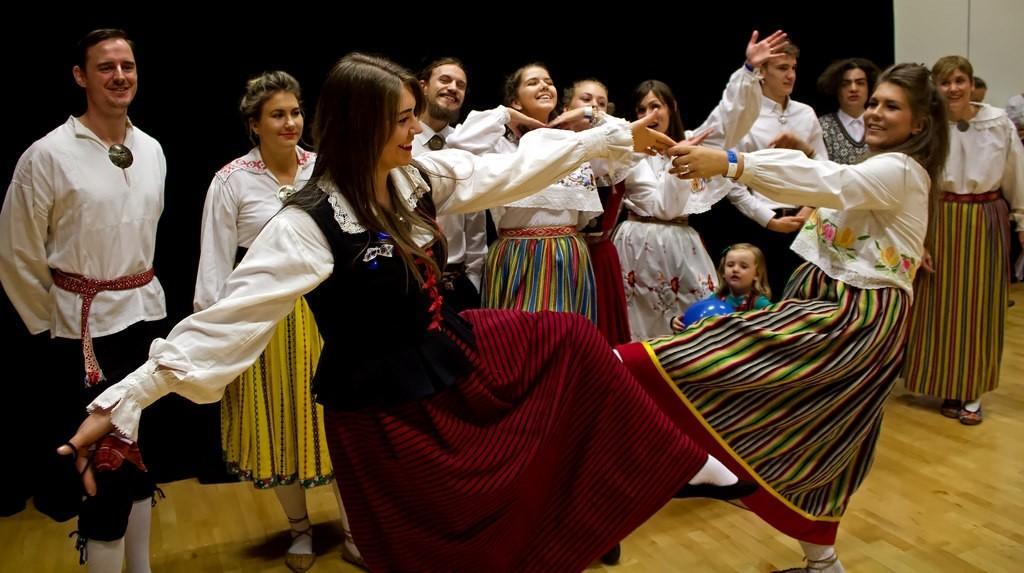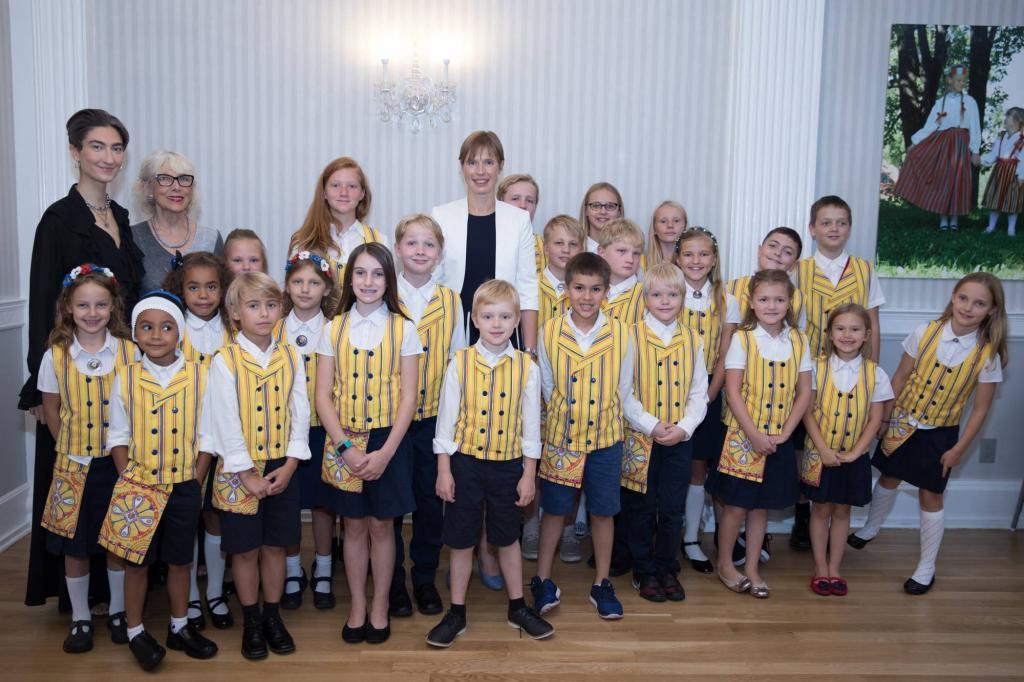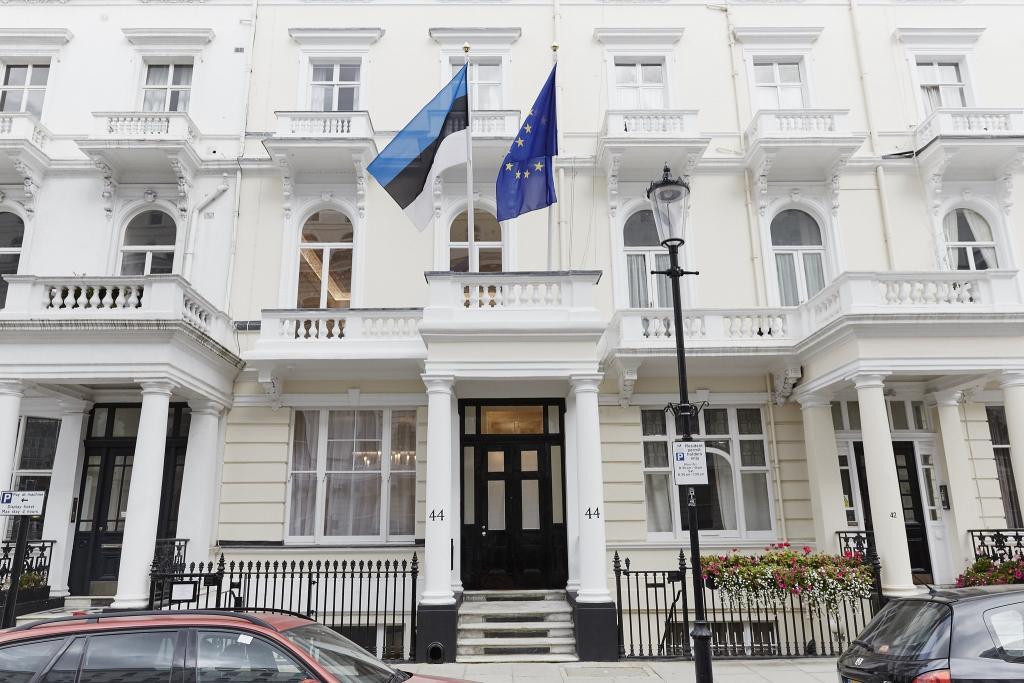Every Estonian should feel they matter to Estonia and are a part of their country – regardless of their location in the world, Keit Spiegel, an adviser on diaspora affairs at the Estonian foreign ministry, writes.
To achieve that Estonians abroad feel connected and included, it is vital to enhance communication and cooperation between the state – the Republic of Estonia – and the Estonians abroad. The state has ongoing activities that help preserve and promote the Estonian identity abroad, but the focus should also shift more to supporting activities that foster the diaspora’s participation in the Estonian society in various fields. This requires a long-term vision and a systematic approach.
Diasporas have long been a feature of the international environment. Strong diasporas have the power to impact the culture, economics, politics and the societies more broadly in the countries they live. As the world has become more competitive, many countries have had a conscious shift in the increased policy awareness of the potentially positive contribution that diaspora inclusion can have.
In the case of Estonia, the communication from the state’s side has so far not been systematic enough. Also, the positive impact contributed by active diaspora members through their (mainly voluntary) activities has not been sufficiently acknowledged. But, for a small country like Estonia, efficient diaspora engagement and forward-looking diaspora policy can be especially useful as it can unlock a lot of hidden potential.
A small country with a strong diaspora
Estonia is one of the smallest countries in Europe, with just around 1.3 million people – but it has a large diaspora all over the world. It is estimated that there are up to 200,000 people with Estonian roots living abroad, accounting for approximately 15% of all Estonians.
The largest communities are currently in Finland, Russia, the UK, Germany, Sweden and North America. It is important to understand that the communities are not homogeneous, differing in size, opportunities and background, as well as their needs and expectations to the state.

Estonians have mainly emigrated as a result of three migration waves.
The first migration wave from Estonia started already in the middle of the 19th century – towards the east and mainly driven by economic reasons and due to the availability of higher education in Russia.
The second wave was mainly to the west. It was largely a forced emigration, driven by World War II (also known as the Great Exodus of 1944). It was an escape from the threat of a new Soviet occupation.
The third wave, from the beginning of 1990s, is related to the restoration of Estonia’s independence and its accession to the European Union in 2004. The emigration happened mainly for economic reasons, but also for studies and seeing the world, for example.

According to a recent research among Estonians living abroad – carried out by the Estonian foreign ministry – around 76 per cent of the respondents valued strong communication between the state and the diaspora and showed clear willingness to support Estonia through different activities globally. Not only does the diaspora make Estonia bigger by having a positive impact on its image, cultural, economic and international affairs, but Estonians living abroad are also an “additional resource” or a “brain bank” – supporting “brain circulation” rather than “brain drain”.
The next steps
The Estonian foreign ministry, in partnership with a public sector innovation team, is currently piloting a project to build bridges between the Estonian entrepreneurs and the diaspora, fostering business diplomacy. The term might seem unfamiliar to many at first, but what has been realised during the extensive interviews of the project is the fact that most Estonians abroad actually foster Estonian business relations – but they do it often unknowingly. To promote and support that further, it is important to develop an active network with different initiatives.
It is vital to contribute to a multi-directional communication, so that Estonians abroad receive all the practical information needed from the state; communities in different countries interact regularly and that the state is actively involved in diaspora activities.
For support, it is important to set up a more regular communication between the Estonians abroad and the country’s embassies. This would foster effective information exchange and a stronger connection with the state – because in many ways, the embassies are the first link between the diaspora and Estonia. It is also important to support the diaspora media outlets.

Estonia is widely recognised as an e-state with all kinds of digital services. It is important to introduce all the different benefits these systems hold, because most activities can be done securely from a distance (99% of all public services are digitally accessible in Estonia).
An efficient diaspora engagement only works in a “two-way street” principle – it is merely not just the state’s actions in involving its diaspora and offering services, but a cooperation and partnership with the diaspora. Communication and inclusion are the key that can help make every Estonian feel like they belong and are cared for – regardless of their distance from Estonia.
A sense of belonging between the diaspora and the Republic of Estonia is supported by recognition, encouragement and strong support for citizens’ initiatives of Estonians living abroad.
The opinions in this article are those of the author. Cover: Canadian-Estonians celebrating Estonian Independence Day in Toronto. The image is illustrative. Photo by Peeter Põldre.


Hello Keit Spiegel
I enjoyed your article and wish to learn more in regards to diaspora at the Estonian foreign ministry. I would like to development a connection and learn more about my heritage and reclaim that which was lost or taken from my family.
Thank you
Monika Rotermann
I used to be an Estonian patriot. I was willing to give all of myself my life& limb for Estonia. However that is no longer the case.
As an Estonian Citizen by blood I was born in the USA from an Estonian refugee father.
In 1995 I was asked to help develop the then fledging Estonian Defense Forces Army Military Police. From the begining of my service to Estonia with my appointment as the Chief of Military Police of Tallinn.
I immediately experienced non acceptance, non inclusion, discrimination, bullying , marginalizion, plaugerzing and shunning from the home born Estonians.
The Discrimination and non inclusion got so bad that in October of 1997 I had to flee Estonian back to America due to the Discrimination, bullying, marginalizion I received.
Over the years I have written several Estonian Presidents all who have done nothing to clear and restore my good name or return me to duty as all I wanted was to help and be apart of Estonia as an Estonian Citizen.
I have never experienced so much rejection and hatred from a people anywhere I lived Serving America or Estonia.
Refering dirogatorally to Estonian Citizens born out side of Estonia as “Foreign Estonians” tells the whole story of non inclusion in itself!
Such is unexceptable and shows that Estonia is a sick country.
As a result of multiable systematic mistrearnent, Discrimination, bullying, Marginalization, from Homegrown Estonian people I no longer have any trust in anything from Estonians and feel based upon my experiences and research Investigations, that Estonians are a severely toxic and a badly divided people at each others throats,their own worst enemies.
The Estonian government does nothing good for it’s own people born abroad especially for us born in the USA or West. My case is 100% proof of such!
Tuleks nimetada, et 19. ja 20. sajandite vahetusel toimusid eestlaste saabumised USA loode osariiki (Dakota) ja sealt edasi Kanadasse, nimelt Alberta, kus loodi kogukonnad ja isegi ehitati kirik. Oleks oluline teada, et Albertas tegutsevad neljanda generatsiooni ,,eestlased” kes ei ole unustanud ajaloolist fakti. Nad on uhked seoses sellega.
Andres Raudsepp, eesti muusika edendaja Kanadas ja kodumaaga kontakti pidaja.
Avaldab kirjutisi Toronto eesti ajalehes ,,Eesti Elu”.
(Veidi kohmakalt kirja pandud. Millegil alusel kaob kohe eelpoolne kirjapandu kui kasutan punkte kirjatahtede peal. AR)
Why was my comment not published? The Estonian language is much more beautiful than the English
I acquired 72 years ago as a young war refugee in 1949.
Anyway, whoever wrote the article neglected to mention the arrival of Estonians in the USA at the end of the 19th Century. From Dakota they crossed the border to southern Alberta where they established communities, even building a church. Three/four generations later they established a Heritage Society which received Canadian government assistance. They even sought out refugees who arrived the same time my family did and made connections.
Andres Raudsepp, former Canadian Army officer and high school teacher of French. I live in Trenton.